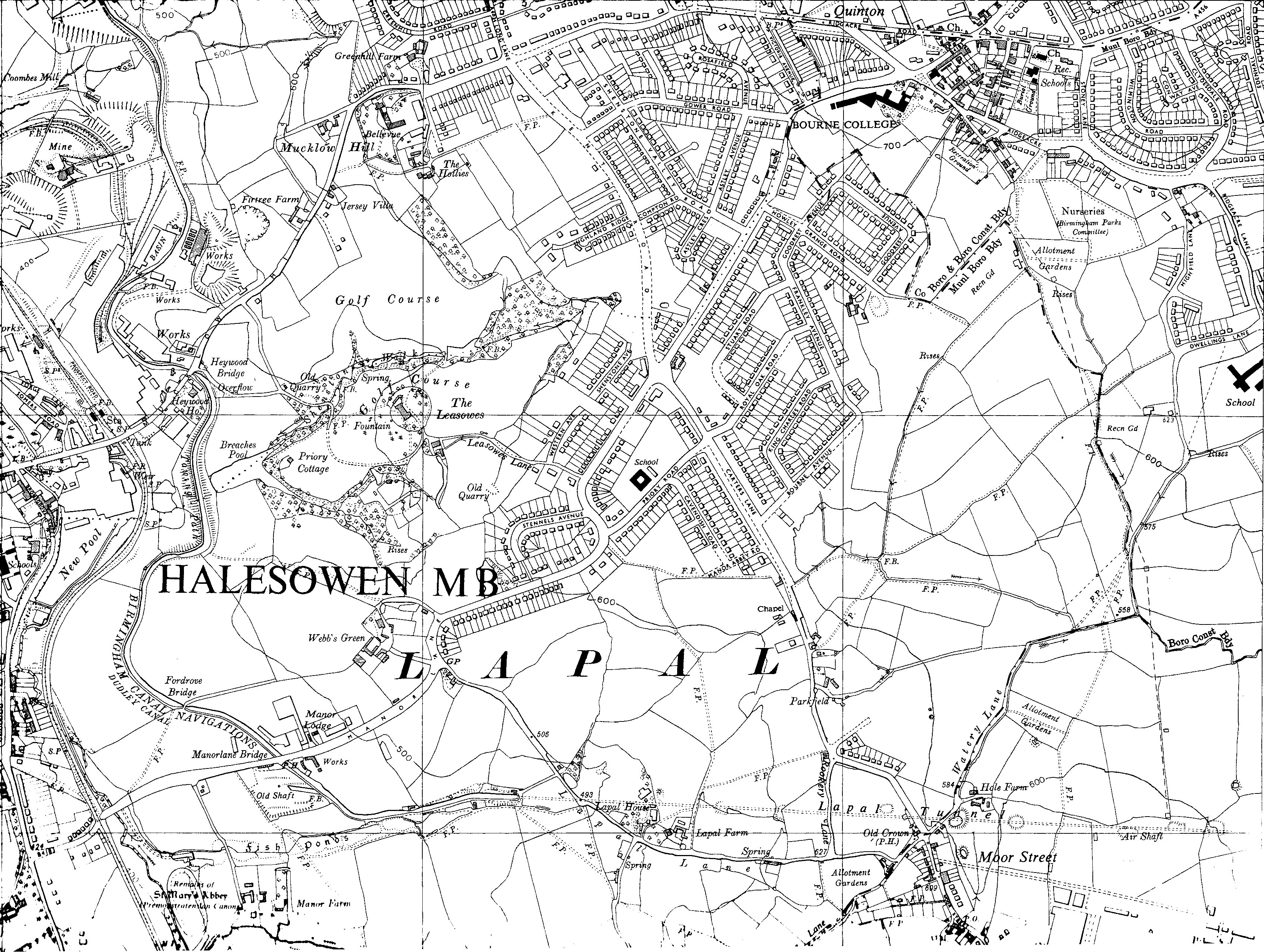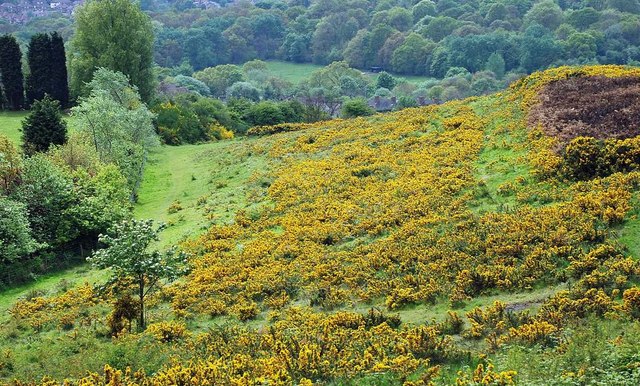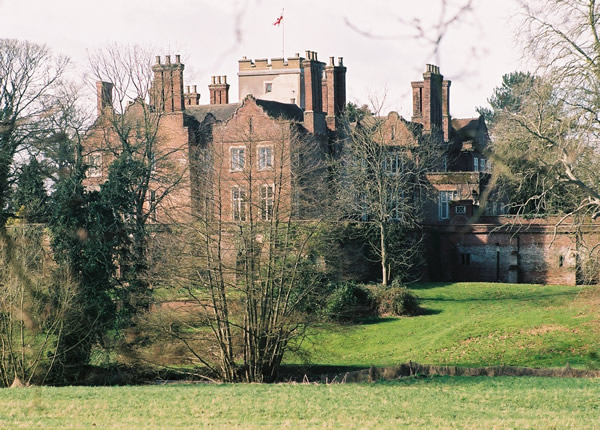|
Dudley Canal Line No 1
The Dudley Canal is a canal passing through Dudley in the West Midlands of England. The canal is part of the English and Welsh connected network of navigable inland waterways, and in particular forms part of the popular Stourport Ring narrowboat cruising route. The first short section, which connected to the Stourbridge Canal, opened in 1779, and this was connected through the Dudley Tunnel to the Birmingham Canal system in 1792. Almost immediately, work started on an extension, called Line No. 2, which ran through another long tunnel at Lapal, to reach the Worcester and Birmingham Canal. This was completed in 1798, but significant trade had to wait until the Worcester and Birmingham was completed in 1802. In 1846, the company amalgamated with the Birmingham Canal Navigations, and various improvements followed, including the Netherton Tunnel, of a similar length to the Dudley Tunnel, but much bigger, with towpaths on both sides and gas lighting. It was the last canal tunnel built ... [...More Info...] [...Related Items...] OR: [Wikipedia] [Google] [Baidu] |
Birmingham Canal Navigations
Birmingham Canal Navigations (BCN) is a network of canals connecting Birmingham, Wolverhampton, and the eastern part of the Black Country. The BCN is connected to the rest of the English canal system at several junctions. It was owned and operated by the Birmingham Canal Navigations Company from 1767 to 1948. At its working peak, the BCN contained about 160 miles (257 km) of canals; today just over 100 miles (160 km) are navigable, and the majority of traffic is from tourist and residential narrowboats. History The earliest mention of the Birmingham Canal Navigation appears in Aris’s Birmingham Gazette on 11 April 1768 when it was reported that on 25 March 1768 the first general assembly of the Company of Proprietors of the Birmingham Canal Navigation was held at the Swann Inn, Birmingham, to raise funds to submit for an Act of Parliament. The first canal to be built in the area was the Birmingham Canal, authorised by the Birmingham Canal Navigation Act 1768 an ... [...More Info...] [...Related Items...] OR: [Wikipedia] [Google] [Baidu] |
River Mersey
The River Mersey () is in North West England. Its name derives from Old English and means "boundary river", possibly referring to its having been a border between the ancient kingdoms of Mercia and Northumbria. For centuries it has formed part of the boundary between the Historic counties of England, historic counties of Lancashire and Cheshire. The Mersey starts at the confluence of the River Tame, Greater Manchester, River Tame and River Goyt in Stockport. It flows westwards through south Manchester, then into the Manchester Ship Canal at Irlam, becoming a part of the canal and maintaining its water levels. After it exits the canal, flowing towards Warrington where it widens. It then narrows as it passes between Runcorn and Widnes. From Runcorn the river widens into a large estuary, which is across at its widest point near Ellesmere Port. The course of the river then turns northwards as the estuary narrows between Liverpool and Birkenhead on the Wirral Peninsula to the west ... [...More Info...] [...Related Items...] OR: [Wikipedia] [Google] [Baidu] |
Lapal Tunnel West 50pc
Lapal is a residential area of Halesowen in the West Midlands of England (part of Worcestershire until 1974). It is situated in the east of the town on the border with Birmingham. The Lapal area sits to the East of the Lapal Canal, to the North of Lapal Lane South up to what is now the M5 motorway, to the South West of Carters Lane and Kent Road, and to the South East of Mucklow Hill. Most of the houses were built between 1930 and 1980. In the late 1970s the large Abbeyfields estate was built alongside the currently disused portion of the Dudley Canal, adding to its already extensive owner-occupier housing stock. It is the most affluent suburb of Halesowen, commanding the largest average house prices of all the suburbs in the town. The area is served by Lapal Primary School and Leasowes High School, the Royal Oak public house and a small cluster of shops opposite, including a newsagent/post office, bakery, fish and chip shop, Chinese take-away, pharmacy and general grocery store. ... [...More Info...] [...Related Items...] OR: [Wikipedia] [Google] [Baidu] |
Josiah Clowes
Josiah Clowes (1735–1794) was a noted English civil engineer and canal builder. His early years were spent running a canal carrying company with Hugh Henshall, and although he worked on some canal projects before 1783, that year marked his switch to being an engineer. His first major project included the Sapperton Tunnel on the Thames and Severn Canal, which despite huge engineering difficulties, gained him a reputation which enabled him to become the first great tunnelling engineer, responsible for three of the four longest canal tunnels built. Early life Clowes was the youngest child of a family of six, and was born in North Staffordshire in 1735. His parents are believed to be William Clowes and Maria Whitlock. He also had an older brother called William, who was involved in coal mining at Whitfield, Norton and Sneyd Green, and it was through him that he met another partner in the business called Charles Bagnall. In late 1762 he married Bagnall's sister Elizabeth, and the mar ... [...More Info...] [...Related Items...] OR: [Wikipedia] [Google] [Baidu] |
Pensnett Chase
Pensnett Chase was a wooded area of land owned by the Lords of Dudley Castle in the parishes of Kingswinford and Dudley (or mainly so). As a chase, it was originally used by them to hunt game in although it was also used as common land by local people. At some periods it was regarded as extending into Gornal, West Midlands, Gornal and including Baggeridge Country Park, Baggeridge Wood at one end and perhaps Cradley Heath at the other. By the 17th century the ancient woodlands had largely been cleared. In the early modern period, the Dudley portion of the Chase came to be known as Dudley Wood and the name was largely reserved for the portion in Kingswinford. This was in the 18th century an extensive area of commonland which was inclosure, inclosed in the late 18th century, with the mines reserved to the Earl of Dudley, lord of the manor. It extended from the area now called Pensnett through Brierley Hill to Quarry Bank. History Pensnett Chase, a wooded area to the south and w ... [...More Info...] [...Related Items...] OR: [Wikipedia] [Google] [Baidu] |
Thomas Dadford
Thomas Dadford Sr. (died 1809) was an English canal engineer as were his sons, Thomas Dadford Jr., John Dadford, and James Dadford. Biography Thomas Dadford probably originated from Stewponey or Stourton, Staffordshire, near Stourbridge. He started as one of James Brindley's many pupil-assistants, in which capacity he worked on the Staffordshire and Worcestershire Canal and the Birmingham Canal Navigations. He was engineer and surveyor on the Dudley Canal until 1783, and consulted by them later when they were extending through Dudley Tunnel. *1774 – with John Priddy he surveyed the Stroudwater Canal *1782 – with Thomas (Junior), he made recommendations for improvements to the River Trent. *1784 – advised on the Coventry Canal's aqueduct over the River Tame. *1789 – cutting contractor on the Cromford Canal. *1791, he became a shareholder of the Neath Canal. The latter part of his career was spent in Monmouthshire, Glamorganshire, and Montgomeryshire, for e ... [...More Info...] [...Related Items...] OR: [Wikipedia] [Google] [Baidu] |
Act Of Parliament
Acts of Parliament, sometimes referred to as primary legislation, are texts of law passed by the Legislature, legislative body of a jurisdiction (often a parliament or council). In most countries with a parliamentary system of government, acts of parliament begin as a Bill (law), bill, which the legislature votes on. Depending on the structure of government, this text may then be subject to assent or approval from the Executive (government), executive branch. Bills A draft act of parliament is known as a Bill (proposed law), bill. In other words, a bill is a proposed law that needs to be discussed in the parliament before it can become a law. In territories with a Westminster system, most bills that have any possibility of becoming law are introduced into parliament by the government. This will usually happen following the publication of a "white paper", setting out the issues and the way in which the proposed new law is intended to deal with them. A bill may also be introduced in ... [...More Info...] [...Related Items...] OR: [Wikipedia] [Google] [Baidu] |
Bill (proposed Law)
A bill is proposed legislation under consideration by a legislature. A bill does not become law until it is passed by the legislature as well as, in most cases, approved by the executive. Once a bill has been enacted into law, it is called an '' act of the legislature'', or a ''statute''. Bills are introduced in the legislature and are discussed, debated and voted upon. Usage The word ''bill'' is primarily used in Anglophone United Kingdom and United States, the parts of a bill are known as ''clauses'', until it has become an act of parliament, from which time the parts of the law are known as ''sections''. In Napoleonic law nations (including France, Belgium, Luxembourg, Spain and Portugal), a proposed law may be known as a "law project" (Fr. ''projet de loi''), which is a government-introduced bill, or a "law proposition" (Fr. ''proposition de loi''), a private member's bill. For example the Dutch parliamentary system does not make this terminological distinction (''wetsontwe ... [...More Info...] [...Related Items...] OR: [Wikipedia] [Google] [Baidu] |
Stourton, Staffordshire
Stourton is a hamlet in Staffordshire, England a few miles to the northwest of Stourbridge. There is a fair amount of dispute over the pronunciation, being pronounced 'stower-ton', 'stir-ton' or 'store-ton' by different people from the area. The nearest sizeable villages are Wollaston and Kinver, the nearest hamlets are Prestwood and Dunsley. It lies on the River Stour. The Staffordshire and Worcestershire Canal and Stourbridge Canal meet at Stourton Junction, which places Stourton on the Stourport Ring, a navigable waterway popular with narrowboat holidaymakers. Stourton is situated either side of the A458 road, at the junction of the A449 between Wolverhampton and Kidderminster. The name originally related to the area west of the River Stour, is now applied as including the area east (and south) of the river, which was formerly the township of Halfcot. The Stewponey Inn was formerly situated at the cross roads, until it was demolished to make way for housing. Stewponey ... [...More Info...] [...Related Items...] OR: [Wikipedia] [Google] [Baidu] |
John Ward, 2nd Viscount Dudley And Ward
John Ward, 2nd Viscount Dudley and Ward (22 February 1725 – 10 October 1788) was a British peer and politician. He was the son of John Ward, 1st Viscount Dudley and Ward, and his first wife Anna Maria (née Bourchier) and educated at Oriel College, Oxford. He was returned to Parliament as one of two representatives for Marlborough in 1754, a seat he held until 1761, and then represented Worcestershire until 1774. The latter year he succeeded his father in the viscountcy and entered the House of Lords. Ward married Mary, daughter of Gamaliel Fair, gardener and seeds-man, who died on 17 December 1758, aged 69. Ward died in October 1788, aged 63. As he had no sons he was succeeded in the viscountcy by his half-brother William. A daughter He had a natural daughter Anna Maria Ward (1778–1837), by his Viscountess (when she was still Mrs. Mary Baker, whom he later married). Lord Dudley in his will made an ample provision for the girl and appointed his widow, who died in 1810, and H ... [...More Info...] [...Related Items...] OR: [Wikipedia] [Google] [Baidu] |
Ironstone
Ironstone is a sedimentary rock, either deposited directly as a ferruginous sediment or created by chemical replacement, that contains a substantial proportion of an iron ore compound from which iron (Fe) can be smelted commercially. Not to be confused with native or telluric iron, which is very rare and found in metallic form, the term ''ironstone'' is customarily restricted to hard, coarsely banded, non-banded, and non-cherty sedimentary rocks of post-Precambrian age. The Precambrian deposits, which have a different origin, are generally known as banded iron formations. The iron minerals comprising ironstones can consist either of oxides, i.e. limonite, hematite, and magnetite; carbonates, i.e. siderite; silicates, i.e. chamosite; or some combination of these minerals.U.S. Bureau of Mines Staff (1996) ''Dictionary of Mining, Mineral, & Related Terms.'' Report SP-96-1, U.S. Department of Interior, U.S. Bureau of Mines, Washington, D.C.Neuendorf, K. K. E., J. P. Mehl Jr., and J. A. ... [...More Info...] [...Related Items...] OR: [Wikipedia] [Google] [Baidu] |
Limestone
Limestone ( calcium carbonate ) is a type of carbonate sedimentary rock which is the main source of the material lime. It is composed mostly of the minerals calcite and aragonite, which are different crystal forms of . Limestone forms when these minerals precipitate out of water containing dissolved calcium. This can take place through both biological and nonbiological processes, though biological processes, such as the accumulation of corals and shells in the sea, have likely been more important for the last 540 million years. Limestone often contains fossils which provide scientists with information on ancient environments and on the evolution of life. About 20% to 25% of sedimentary rock is carbonate rock, and most of this is limestone. The remaining carbonate rock is mostly dolomite, a closely related rock, which contains a high percentage of the mineral dolomite, . ''Magnesian limestone'' is an obsolete and poorly-defined term used variously for dolomite, for limes ... [...More Info...] [...Related Items...] OR: [Wikipedia] [Google] [Baidu] |





